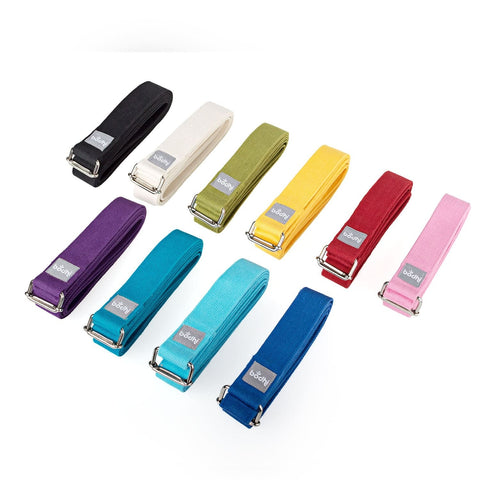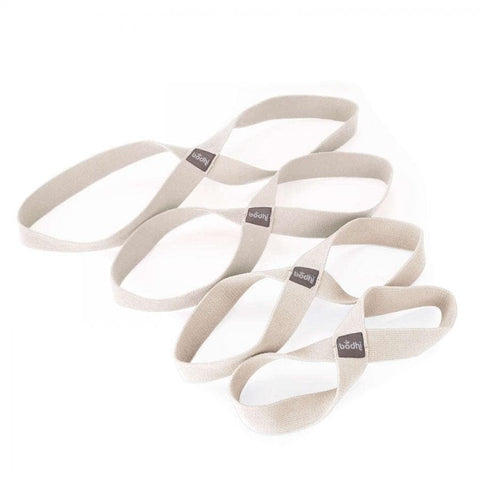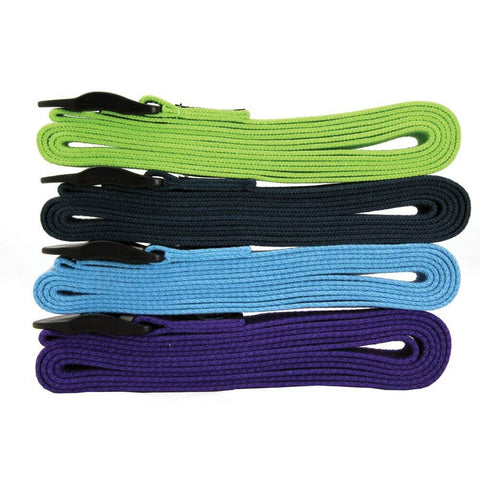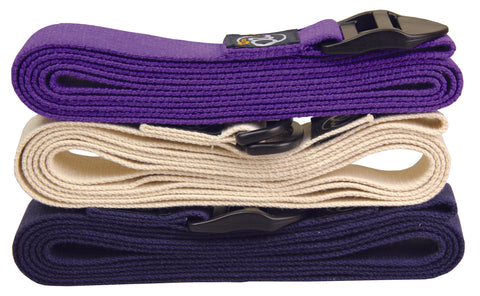A yoga belt is used as an aid in yoga practice to achieve better stretching and improve alignment in poses. It helps keep limbs within reach and supports stretches, allowing for a deeper and safer practice. A yoga belt can help maintain correct postures for longer periods of time without excessive strain, making it an excellent tool for both beginners and more advanced practitioners looking to deepen and develop their yoga practice.
See the full yoga selection at Trainikamo here .
If you need more tips on choosing yoga equipment, please contact our friendly customer service. You can find contact information in the bottom bar of the page.
Why should you get a yoga belt?
A yoga belt is a tool used in yoga practice to assist with postures, improve flexibility, and support proper alignment. It is usually a long, durable strap with a buckle for adjustment.
The uses of a yoga belt are diverse: A yoga belt can act as a support in difficult poses, helping the practitioner to stay in a pose longer and more stably without overexertion. The belt helps with stretching, allowing for deeper stretches and better mobility. For example, people who do not have enough flexibility to reach their feet during certain poses can use a belt to achieve a better stretch. A yoga belt can help keep body parts in the correct alignment, which is important for a safe and effective practice. It can also help teach the body what the correct position feels like. The belt is also used to deepen certain poses, helping to stretch further and deeper in a safe and controlled way.
Choosing a yoga belt
When choosing a yoga belt, it is important to consider the length, width, material, and buckle quality. These factors directly affect how well the belt is suitable for practice and how versatile it can be used.
The most important factor when choosing a yoga belt is its length. The most common lengths range from 1.8 meters to 3 meters. The different lengths of the belts offer flexibility for different exercises and user needs. Shorter belts can be used for basic poses and simpler stretches, while longer belts are preferred for more complex poses where more reach or support is needed. The choice of length depends on the person's size, mobility, and the exercise for which the belt is being used. Longer belts are more versatile, but choosing the right length helps ensure that the belt supports the exercise in the best possible way.
The width of the belt affects its comfort. A belt that is too narrow can be uncomfortable or tight, while a wider belt distributes pressure over a wider area and is generally more comfortable to wear and control. A soft, non-slippery material is easier to hold and feels more comfortable in the hand. The most popular material for a yoga belt is cotton. Others prefer belts made of nylon, which are long-lasting but can be a bit more slippery.
The belt buckle should be easy to use and secure. Metal buckles are durable and offer good adjustability, while plastic buckles are lighter but not necessarily as durable.
Of course, it's also important to choose a belt that's pleasing to the eye and matches your other yoga accessories! That's why we've chosen a variety of different colors for our collection to reflect your style.
Our friendly customer service will help you
Do you need more tips on choosing yoga products? Contact our customer service, we will be happy to help you choose the products. We also deliver larger batches for studio use.







